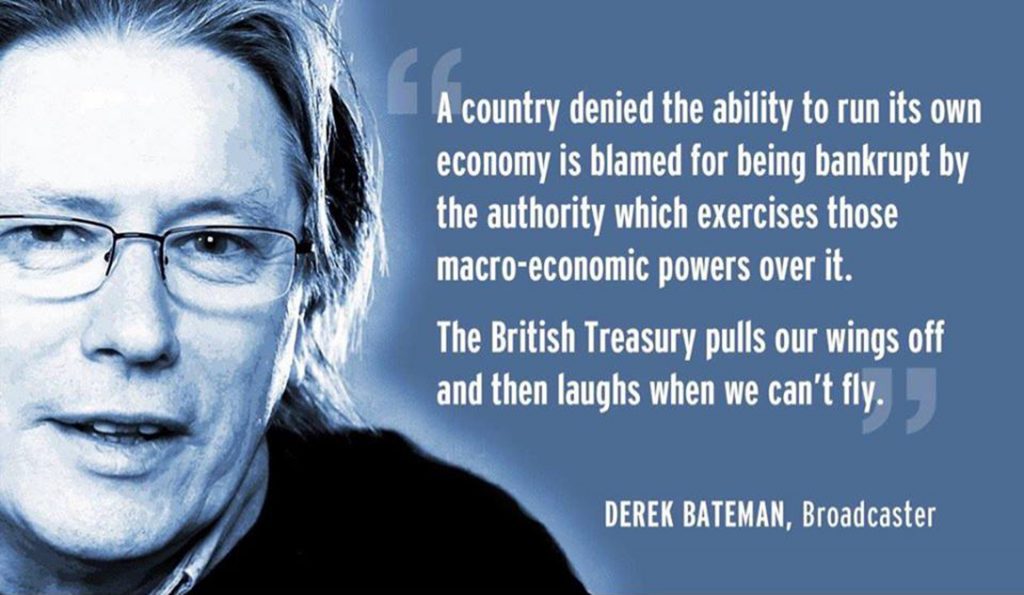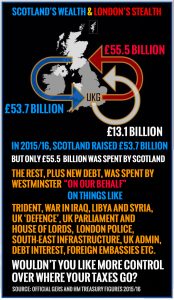Warning: Undefined array key "ssba_bar_buttons" in /usr/home/movgwifi/public_html/yesedinburghwest.info/wp-content/plugins/simple-share-buttons-adder/php/class-buttons.php on line 602
Warning: Undefined array key "ssba_bar_buttons" in /usr/home/movgwifi/public_html/yesedinburghwest.info/wp-content/plugins/simple-share-buttons-adder/php/class-buttons.php on line 602
Warning: Undefined array key "ssba_bar_buttons" in /usr/home/movgwifi/public_html/yesedinburghwest.info/wp-content/plugins/simple-share-buttons-adder/php/class-buttons.php on line 602
 The economy of an independent Scotland
The economy of an independent Scotland
Here are some facts: check them yourself
– then YOU decide
Opponents of Scottish Independence like to speak of Scotland’s “black hole”, most recently said to be £13.4 billion annually, as proof that Scotland cannot afford to be independent.
Anybody who applies any thought at all can see that this is extremely unlikely to be true:
- Scotland is a developed North European country- all other such countries are highly successful.
- Scotland has immense natural resources- renewable energy, oil, gas, water, forests, fish and farms
- Scotland has a fabulous brand image- golf, whisky, tartan, castles, scenery.
- Scotland has iconic exports- whisky, fresh food, Harris tweed, knitwear, tourism
- Scotland has world class universities, and is a major centre of scientific and medical research.
But Scotland is not independent, and is not in control of its economy. So is this alleged “black hole” (deficit is what they mean) caused by Westminster mismanagement, or is it a mirage? We know that the Scottish Government has always run a balanced budget, has limited borrowing powers, and therefore no debt. The UK deficit is £69 billion – is Scotland’s “black hole” just its share of UK mismanagement of the economy?
So where does the “black hole” come from? In 1992, to combat the SNP, the then Tory Government dreamed up GERS (Government Expenditure and Revenue Scotland) to prove that Scotland did not pay its way. This amalgam of estimates and guesstimates has continued ever since, and was published by the Lib/Lab Executive after devolution, although the figures largely come from the UK Treasury and Office for National Statistics. When the SNP came to power in 2007, oil and gas revenues were added to Scottish revenue, and Scotland looked good, with positive revenue over expenditure until 2014 and the oil price fall. This fall affected Norway too, but revenues there are still 170 times Scotland’s on twice the amount of oil extracted – which makes a strong case that the oil wealth is still being badly mismanaged today.
In GERS 2018:
- Scotland raised in revenue (including oil and gas) £60 billion
- Total expenditure attributed to Scotland was £73.4 billion, hence the infamous £13.4 billion deficit.
- Scotland is charged £14.8 bn (38%) out of the UK £39.4 bn deficit – it should only be £3.3 bn (8.3%). Scotland is over-charged £11.5 bn – and the headline deficit should only be £1.9 bn.
- HM Treasury (in a document separate from GERS) shows the amount of money actually allocated to Scotland for spending in Scotland is £56.6 billion. Thus Scotland should be in surplus by £3.4 bn. The money not spent in Scotland or by Scotland is essentially a charge for UK functions:- UK Government and parliament including the House of Lords, foreign embassies and services, EU payments, defence (excessive and inappropriate for Scotland), national infrastructure projects (most in London and SE England- Crossrail, HS2 etc) and servicing the UK debt.
- There are many ways these costs can be slashed in an independent Scotland.
- GERS cannot be used as a forecast of how an independent Scotland would run its economy.
- THE £13 BILLION ‘BLACK HOLE’ IS WHOLLY MISLEADING, and intended to be so.
Scotland, as an independent country, has no debt, and huge economic potential.
Scotland, as a normal independent country, would have the option of borrowing and running a deficit.
The people of Scotland, and their Scottish Government, will decide our future economic policy.
Yes Edinburgh West has a website, Facebook, Twitter, National Yes Registry and a Library of topics on Scottish Politics, including Business & Economy.




